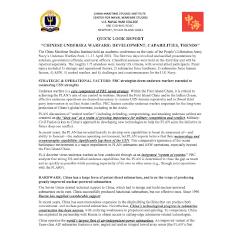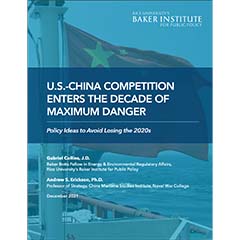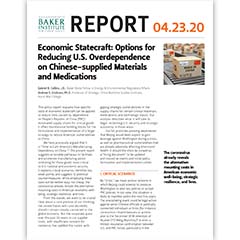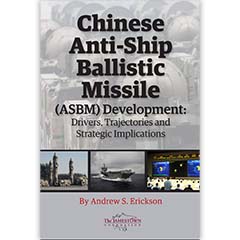Exposed Undersea: PLA Navy Officer Reflections on China’s Not-So-Silent Service
Ryan D. Martinson, “Exposed Undersea: PLA Navy Officer Reflections on China’s Not-So-Silent Service,” Center for International Maritime Security (CIMSEC), 24 June 2025.
From CMSI Director CAPT Christopher H. Sharman, USN (Ret.):
What do PLAN officers tell themselves about the capabilities of U.S. undersea surveillance systems? What are the acoustic vulnerabilities of PLAN submarines? Moreover, how should the PLAN counter undersea surveillance networks?
CMSI’s own Professor Ryan Martinson published the attached article in CIMSEC this morning that addresses what some PLAN officers tell themselves about these questions. Professor Martinson’s article is available for download at the CIMSEC website HERE.
Professor Martinson’s article captures the highlights of a PLA journal article published in Military Art (军事学术), a prestigious journal published by the Chinese Academy of Military Science. The original PLA article published in late 2023, titled, “Effectively Responding to the Threat to China’s Undersea Space Posed by the Powerful Enemy’s Three-Dimensional Surveillance System,” proposes ways for the PLAN to respond to the threat posed by undersea surveillance networks. Military Art is an internal PLA journal, enabling the authors to share their insights and expertise with more candor than is normally seen in publicly available PLA sources.
The authors of the PLA article provide several suggestions for how to counter U.S. underwater maritime surveillance capabilities. Their recommendations may or may not be adopted. Their inclusion in the PLA article, however, suggests the PLAN may be considering at least some of these ideas.
A few of the proposals detailed in the original PLA article include:
- Prioritizing the development of capabilities to “attack and damage” (对抗并破坏) the U.S. undersea surveillance system – specifically, developing UUVs that can locate enemy underwater arrays and interfere with and damage them.
- Developing new technologies, conduct reconnaissance against nodes in the U.S. Navy undersea surveillance network.
- Developing capabilities for “finding and fixing” (找得着、盯得住) key nodes, especially “small, quiet targets” (水下安静小目标), presumably referring to UUVs.
- Developing “detection arrays and reconnaissance and surveillance networks” that integrate acoustic, magnetic, optical, and electronic sensors.
- Incorporating artificial intelligence and data to support efforts to find (发现), identify (识别), evaluate (研判), and counter and destroy (防抗与毁伤) the components of the U.S. undersea surveillance system.
- Conducting surveys of shipping channels (开展航道测量) and “special reconnaissance missions” (专项侦察), and using side-scan sonar and high-frequency imaging sonar to perform detailed inspections of important straits, waterways, ports, and “suspicious ocean areas” (可疑海域)—presumably to locate hidden nodes in the U.S. system.
- Accelerating the acquisition of equipment and devices to destroy and disrupt enemy space-based, sea-based, and underwater surveillance nodes.
The authors of the PLA article argue that emphasize that the U.S. undersea surveillance system suffers from a number of vulnerabilities, amplified by the sheer scale of the Western Pacific battlespace. If enough nodes are degraded, the system as a whole may lose its functionality.
In summary, the PLAN authors argue that the China’s navy needs to conduct specialized training to better enable it to confront the U.S. undersea surveillance system. To that end, it must accelerate the acquisition of equipment and devices to destroy and disrupt enemy space-based, sea-based, and underwater surveillance nodes.
Professor Martinson’s CIMSEC article is worth your time.
SAMPLE TEXT:
While much of the international attention on China’s naval buildup is focused on its rapidly modernizing surface fleet, the People’s Liberation Army Navy (PLAN) is also taking bold steps to field a first-rate submarine force. By the end of this year, the service could have as many as 25 Yuan-class submarines, which are among the world’s most advanced diesel-electric boats. Its small-but-growing fleet of nuclear-powered attack (SSN), guided missile (SSGN), and ballistic missile (SSBN) submarines has achieved major technological upgrades, and with the benefit of a massive production facility in Huludao, may be on the cusp of significant expansion.
The PLAN is investing in submarines because it recognizes their tremendous potential deterrent and warfighting value. That value, however, hinges on the ability of their boats to operate undetected. According to Chinese military experts however, that basic requirement cannot be guaranteed—not even close. Writing in the November 2023 issue of Military Art (军事学术), a prestigious journal published by the Chinese Academy of Military Science, three PLAN officers revealed that the peacetime operations of Chinese submarines are highly vulnerable to the U.S. Navy’s undersea surveillance system, raising serious questions about their strategic and operational utility.
Entitled “Effectively Responding to the Threat to China’s Undersea Space Posed by the Powerful Enemy’s Three-Dimensional Surveillance System,” the article deserves special attention for two main reasons. First, while not an official assessment as might appear in a “white paper” or a “five-year plan,” it reflects the opinions of PLAN experts whose views are informed by access to classified intelligence and subject to peer review. The first author, Senior Captain Zhang Ning (张宁), is a faculty member at the Naval University of Engineering, College of Weapons Engineering. He co-authored the piece with Commander Zhang Tongjian (张同剑), from the 3rd Destroyer Flotilla (Unit 91257), and Lieutenant Fan Zhaopeng (范赵鹏) of the PLAN Oceanographic and Meteorological Center (Unit 91001). Second, the publication in which the article appears—Military Art—is an internal PLA journal (军内刊物). This enables the authors to share their expertise with a candor that is rarely (if ever) seen in publicly-available PLA sources. … … …






































